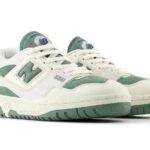Modern fashion is a dynamic and ever-evolving landscape that reflects the complexities and diversities of contemporary life. From sustainable practices and technological advancements to cultural influences and gender fluidity, the fashion industry today is a fascinating blend of creativity, innovation, and social consciousness. This article explores the key trends and factors shaping modern fashion.
Sustainable Fashion: A Paradigm Shift
One of the most significant trends in modern fashion is the emphasis on sustainability. As consumers become increasingly aware of environmental issues, the demand for eco-friendly fashion has surged. Brands are responding by adopting sustainable practices such as using organic materials, recycling fabrics, and ensuring ethical labor practices. Companies like Stella McCartney and Patagonia have become pioneers in this movement, setting standards for sustainability in the industry.
Moreover, the concept of circular fashion, which promotes the reuse and recycling of clothing, is gaining traction. Initiatives like clothing rental services and second-hand marketplaces are encouraging consumers to rethink their consumption patterns and embrace more sustainable alternatives.
Technological Innovations: Transforming Fashion
Technology is revolutionizing the fashion industry in unprecedented ways. From the use of artificial intelligence in design to virtual reality in retail, technological advancements are enhancing the fashion experience for both creators and consumers. AI is being used to predict fashion trends, optimize supply chains, and even design new garments. Brands like Nike and Adidas are leveraging AI to create customized products that cater to individual preferences.
Virtual reality (VR) and augmented reality (AR) are transforming the shopping experience. Virtual try-ons and immersive fashion shows are becoming more common, allowing consumers to interact with products in innovative ways. These technologies not only enhance customer engagement but also reduce the need for physical samples, contributing to sustainability.
Cultural Influences: The Global Fashion Mosaic
Modern fashion is a melting pot of cultural influences, reflecting the globalized world we live in. Designers draw inspiration from diverse cultures, creating collections that celebrate and reinterpret traditional aesthetics. This cross-cultural exchange is evident in the popularity of fusion fashion, where elements from different cultures are blended to create unique and contemporary styles.
The rise of streetwear is a testament to the influence of urban culture on fashion. What started as a niche style has now become mainstream, with high-end brands like Louis Vuitton and Balenciaga incorporating streetwear elements into their collections. This fusion of high fashion and street style has democratized fashion, making it more accessible and relatable.
Gender Fluidity: Redefining Fashion Norms
Modern fashion is also challenging traditional gender norms. The concept of gender fluidity is becoming more accepted, with many brands offering gender-neutral collections. This shift reflects broader societal changes towards inclusivity and diversity. Designers like Alessandro Michele at Gucci and brands like Telfar are at the forefront of this movement, creating collections that blur the lines between men’s and women’s fashion.
This trend is not just about clothing but also about breaking down stereotypes and encouraging self-expression. The acceptance of diverse body types, gender identities, and personal styles is making fashion more inclusive and representative of real-world diversity.
Fast Fashion vs. Slow Fashion: The Ongoing Debate
The debate between fast fashion and slow fashion continues to shape the industry. Fast fashion, characterized by the rapid production of low-cost clothing, caters to the desire for up-to-the-minute trends. However, it often comes at the cost of environmental degradation and unethical labor practices. Brands like Zara and H&M are often criticized for their fast fashion models, even as they make efforts to adopt more sustainable practices.
In contrast, slow fashion advocates for mindful consumption and the production of high-quality, long-lasting garments. This movement emphasizes craftsmanship, ethical production, and sustainability. Consumers are increasingly recognizing the value of investing in timeless pieces rather than transient trends.
Modern fashion is a reflection of the times, influenced by technological advancements, cultural exchanges, social movements, and environmental consciousness. As the industry continues to evolve, it is embracing sustainability, inclusivity, and innovation. The future of fashion lies in its ability to adapt to changing consumer values and to continue pushing the boundaries of creativity and expression. In this dynamic landscape, fashion remains a powerful form of self-expression and a mirror to the world around us.




Leave a Reply